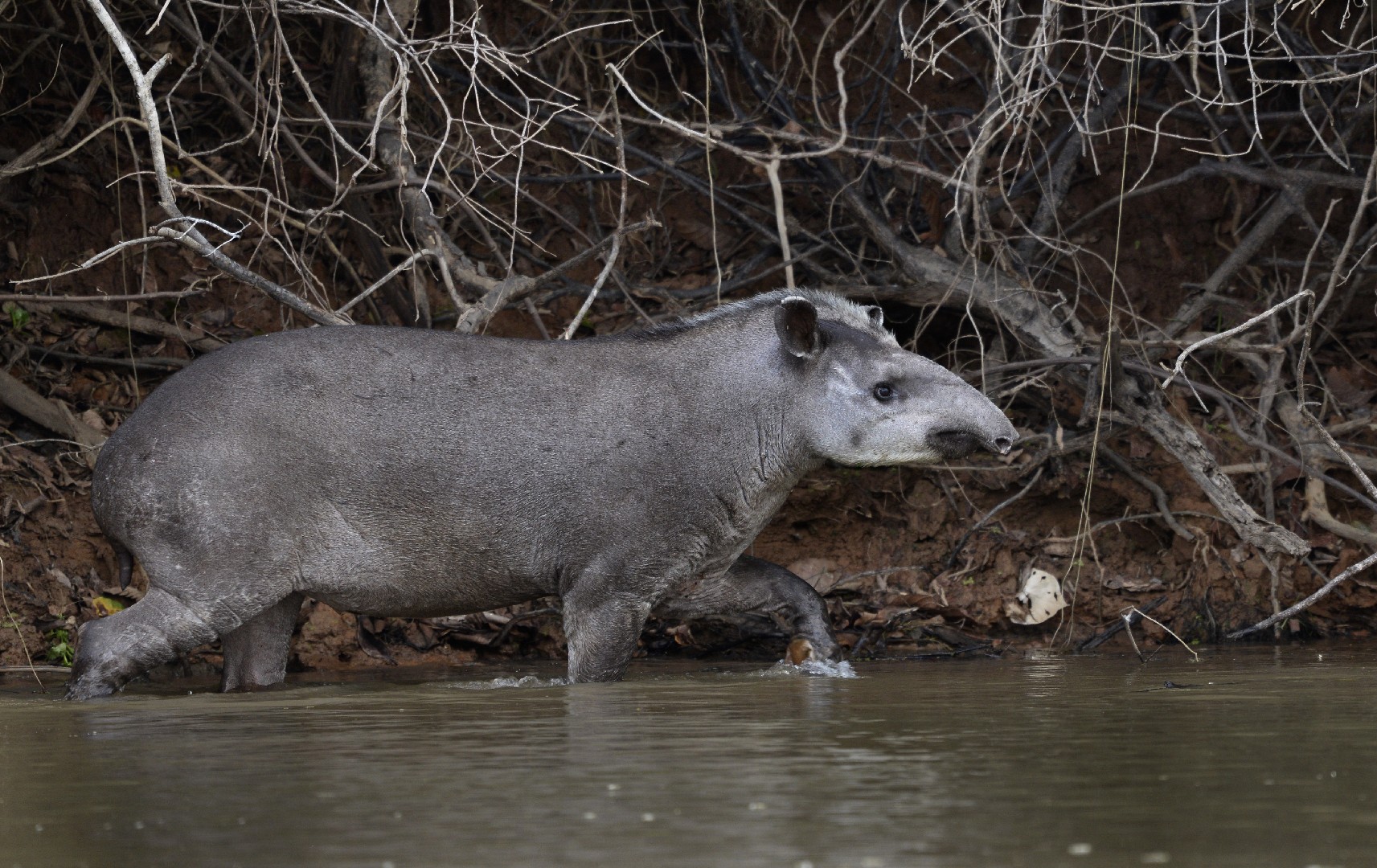South american tapir
A species of Tapir, Also known as Amazonian tapir, Lowland tapir Scientific name : Tapirus terrestris Genus : Tapir
South american tapir, A species of Tapir
Also known as:
Amazonian tapir, Lowland tapir
Scientific name: Tapirus terrestris
Genus: Tapir
Content
Description General Info
 Photo By Wolves201 , used under CC-BY-SA-4.0 /Cropped and compressed from original
Photo By Wolves201 , used under CC-BY-SA-4.0 /Cropped and compressed from original Description
The lowland tapir represents the larger of the three South American tapir representatives and reaches a head-body length of 205 (male animals) up to 220 cm (female animals), the tail being only a stub of 8 centimeters in length. It reaches a shoulder height of 77 to 108 cm. The weight varies between 150 and 250 kg, female animals are usually 25 to 100 kg heavier than the males. The skin is very thick, especially on the neck, and is covered with black-brown fur on the back, which takes on a rather dark brown tint on the chest, abdomen and legs. In addition, a clear mane is formed on the neck. The white edges on the ears are also typical. On the face it almost looks as if it was drawn afterwards, the fur colors reinforce the characteristic head of this animal. The fur on the throat and cheeks is sometimes, but not always, white. The physique is similar to that of the other tapirs, the main characteristic is the strongly arched head and the very flexible, trunk-like nose, which is connected to the upper lip. The build looks squat, but is very muscular. The legs are stocky and short. The front legs of the flatland tapir, like all tapirs, end in four toes, the rear legs in only three. The toes are covered with hooves and spread apart when walking, which prevents them from sinking into soft ground. The eyes are relatively small and on the side of the head.
General Info
Lifespan
25-30 years
Diet
South american tapir predominantly consumes plant matter, employing its prehensile snout to browse for leaves, shoots, and fruits. It exhibits a preference for soft, pulpy fruits and tender young foliage, which together constitute a significant portion of its diet.
Appearance
South american tapir is a medium-sized animal characterized by its robust barrel-shaped body with a short coat of coarse fur. It showcases a largely dark brown or greyish-black coloration. Its most distinguishing feature is its flexible, elongated proboscis or 'trunk'. The animal does not present any significant horns, wings, or tail. There are no prominent differences in appearance due to age, gender, or subspecies.
Behavior
South american tapir is a largely nocturnal, solitary creature primarily active during twilight and night. Noted for its foraging behavior, south american tapir uses its prehensile trunk to grasp plants for ingestion. This species marks its territory via scent marks and defecates in communal latrines. South american tapir swims proficiently, often submerging to evade predators.
Population
Decreasing
Scientific Classification
Phylum
Chordates Class
Mammals Order
Odd-toed hoofed mammals Family
Tapirs Genus
Tapir Species
South american tapir